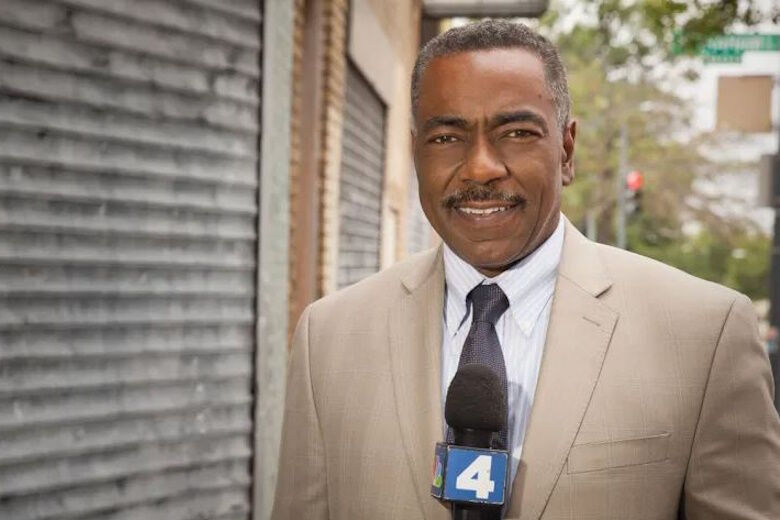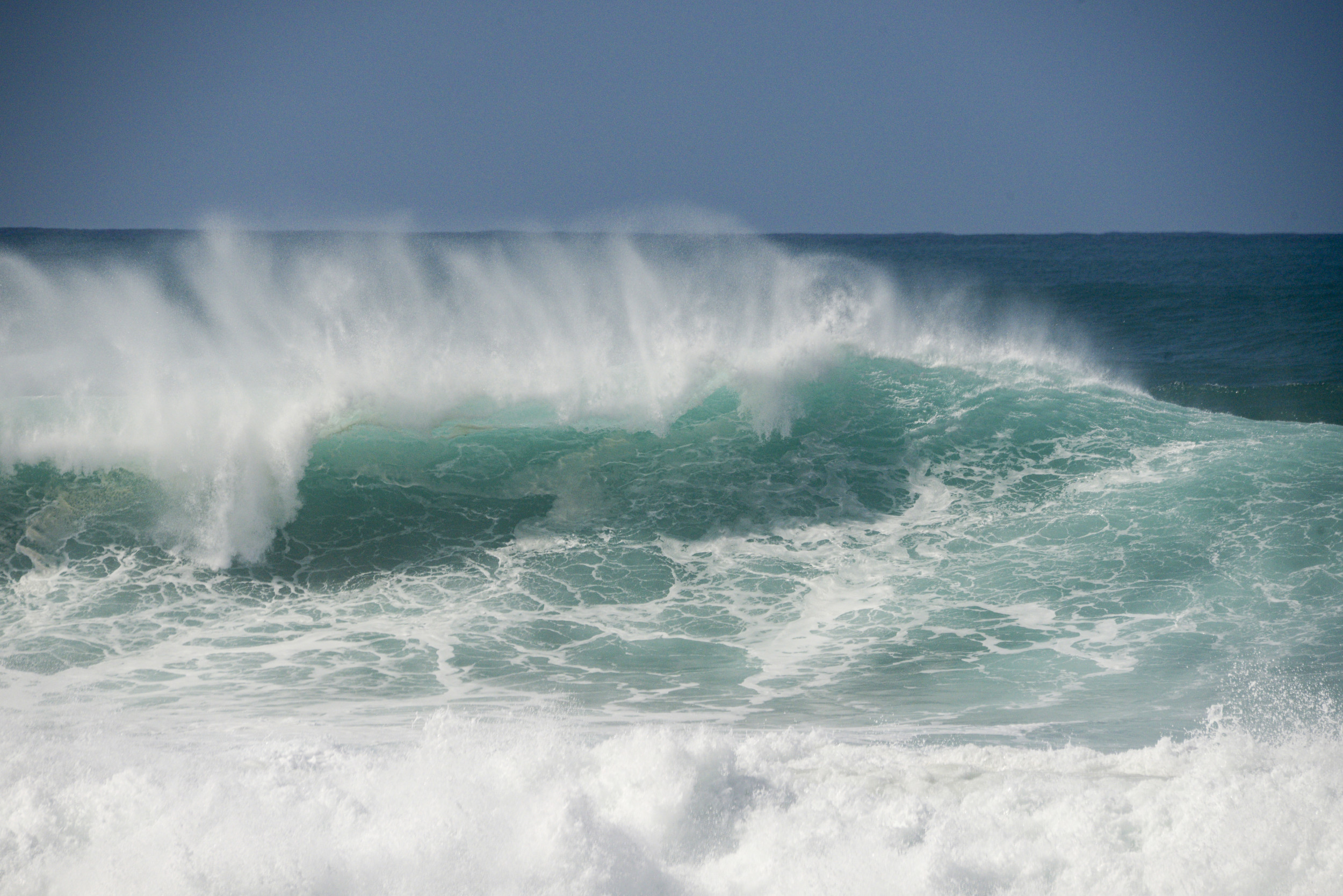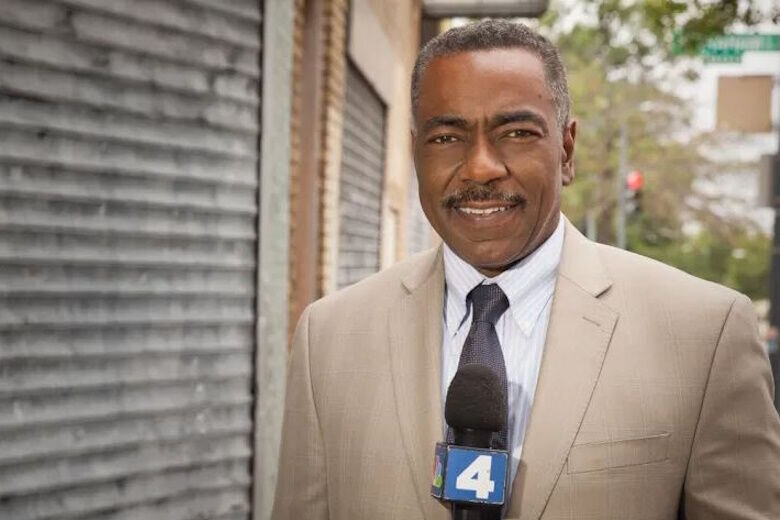Washington
Solving the 1870s photo mystery of Lake Washington coal shipping

Local history can sometimes be a “local mystery.” And occasionally, one possible explanation for some aspect of local history gets turned on its head when new information appears.
That’s the case with a pair of vintage photographs which a group on the Eastside believed showed part of a major coal mining operation on the shores of Lake Washington 150 years ago.
More from Feliks Banel: Seattle man was a key figure in the airship era
This story was first shared on Paul Dorpat’s Now & Then blog by Clay Eals and Jean Sherrard, who write the weekly Now & Then column for the Seattle Times and who are both good friends of Seattle’s Morning News.
Eals and Sherrard gave their permission to tell this story on the radio. Their cooperation, and the story itself, say a lot about what motivates amateur historians and other volunteer sleuths to look into otherwise overlooked stories, and it says a lot about collaboration (and, when necessary, humility) in the Pacific Northwest heritage community.
It was back in the 1870s when coal was being mined in what’s now the Eastside suburbs east of Lake Washington near what’s now Newport and Newcastle. Many of the mines were located in what’s now King County’s Cougar Mountain Regional Wildland Park near Newcastle. Extracting coal was one of the first large-scale industrial undertakings in this area, ahead of even large-scale timber extraction in many ways.
The outfit doing the work was called the Seattle Coal and Transportation Company. The coal they were extracting from Newcastle was being sold as far away as San Francisco – but it took a complex system just to get the coal to the waterfront to be loaded on ships in Elliott Bay at the foot of Pike Street.
In those long-ago days before the Montlake Cut, the transportation effort required barges on Lake Washington; a short “portage railroad” from Union Bay on Lake Washington to Portage Bay on Lake Union; barges on Lake Union from Portage Bay to roughly where MOHAI now stands; and then the city’s first railroad along what’s now Westlake Avenue.
Harry Dursch lives in the Newport area south of Bellevue and is a member of the Newcastle Historical Society and co-author of a book about the history of coal mining in that area. He’s also part of an ad hoc group of historians who’ve been studying the coal industry on Lake Washington for many years.
“They’d load [the coal] up on trams and bring it down to the top of where the Newport Hills shopping center is, plus or minus,” Dursch told KIRO Newsradio. Then, they’d “lower down this incline to Lake Washington, where they built a very significant pier, and they would load it onto a barge and ship it over to the Montlake Cut area. And the journey began.”
And what a journey, says Harry Dursch. It was laborious, as well as time and resource-intensive.
“We think the coal was handled almost 13 times by the time it got from the ground to the customer in San Francisco,” Dursch said.
About the “incline to Lake Washington” that Dursch mentioned: That’s a pretty serious piece of infrastructure, a giant wooden trestle about 1,200 feet long, critical to get the coal from the hillside above the lake down to lake level to load onto barges. The incline, easily the most complex and intriguing part of the entire operation, is what’s shown in the pair of vintage photos.
The photos are from the collection of the Eastside Heritage Center. They were donated by a local family about 30 years ago – though the family kept the originals and allowed Eastside Heritage Center to make duplicates.
Kent Sullivan is a railroad historian who’s also a member of the Lake Washington coal research group. He told KIRO Newsradio the photos show the scope and scale, and basic operation, of the massive incline structure.
“You’re using railroad rails and railroad-type cars, but you’re lowering the car or cars or pulling them up using some sort of cable or winch,” Sullivan said. “And that’s what you see in these photos. It’s clearly not finished, but it looks close to being done. And if you zoom in on both of them, you can see that there is a work crew about a third of the way down the incline doing something.”
To hear Harry Dursch and Kent Sullivan tell it, the two photos now almost seem like the “Shroud of Turin.” The images were foundational to so much of what they had come to believe about the incline on Lake Washington, and they had found their way into the group’s writings and presentations and to a Seattle Times Now & Then column published in 2019.
Even a quick glimpse tells the casual observer that there’s no denying that the photos are amazing evidence of a once-major industry around here that’s been mostly forgotten.
But then, somebody else saw the images and had a different idea.
The incline photos were part of a presentation given by a staff member of the Eastside Heritage Center for Bellevue College back in 2020. A retired Boeing engineer named Andy Valaas saw that presentation.
Valaas told KIRO Newsradio he doesn’t typically spend a lot of time thinking about local history – but he had commuted between Bellevue and Renton for years, driving right past that particular stretch of Lake Washington in question – where an incline once stood – thousands of times.
When he saw the photos, Andy Valaas immediately knew something was not quite right.
“I looked at the picture and said to myself, ‘There’s no way that can be Lake Washington,’” Valaas said.
So, later that same day back in 2020, Valaas emailed the Newcastle Historical Society about his concerns. But that wasn’t all. In his email, he also wrote that he had already identified the place he thought the photos actually showed: Lake Whatcom near Bellingham and an incline built in the 1890s for something called the Blue Canyon Mine.
Zeroing in on Lake Whatcom wasn’t some random stroke of luck. Valaas had remembered seeing an old photo of coal cars on a barge on Lake Whatcom – which, he thought, meant there was probably an incline somewhere on that lake, too. He used Google Earth to confirm that the landscape in the old photos matched present-day Lake Whatcom.
Harry Dursch and Kent Sullivan read Andy’s email and, to their credit, took his theory seriously. They tracked down photos of the Blue Canyon incline at Lake Whatcom in the collection of the Whatcom Museum in Bellingham.
Dursch and Sullivan say it was four otherwise innocent trees that are visible in the Whatcom Museum photo – which are also visible in what they thought were Lake Washington photos – that convinced them Andy Valaas was right.
“When you look at trees A, B, C, and D, they overlap all the images,” Dursch said, referring to a now-annotated image identifying the quartet of distinctive trees. “And that was, to me, that was the slam dunk – those four trees.”
“Yeah, especially the one with the U-shaped branches at the top,” Sullivan chimed in. “There’s just no way that’s going to be a duplicate somewhere else.”
Apart from the record being corrected and the mystery being solved, what’s most remarkable about this story is how candid and transparent Harry Dursch, Kent Sullivan, and Matt McCauley (Sullivan and McCauley together wrote the blog post for Now & Then) are about what it was like to have Andy Valaas essentially reset their historical reality on a years-long project.
Harry Dursch acknowledges it wasn’t easy. The process, he says, almost felt like grieving.
“I don’t think the three of us will ever forget that month-long transition from denial to acceptance,” Dursch said. “It was pitchers of beer, and anger and frustration and disappointment, and then acceptance that Andy was right, and this is the way history unfolds.”
Matt McCauley is the third member of the group interviewed for this story who’s also a good friend of Seattle’s Morning News. McCauley was also very candid about how tough it was being corrected.
“So this was very painful, this whole process,” McCauley told KIRO Newsradio. “But you reach a point where you can’t keep lying to yourself, where truth has to prevail. And you have to say, ‘Oh, no, I was so invested in this.’”
“But you know, truth is truth,” McCauley said.
And that’s part of the reason why McCauley and Sullivan wanted to write about their experience for the Now & Then blog, and not simply pretend nothing had happened and hope no one noticed.
“There was no question that we wanted to set the record straight,” Kent Sullivan said. “[And] it seemed like a ‘teaching moment’ you wouldn’t want to pass up about how history works.”
McCauley, who’s been searching and researching Lake Washington for decades and who is involved with other notable history projects, says he ultimately had to go up to Lake Whatcom in person to see for himself.
“A lot of it was getting up to as much elevation as I could at that Blue Canyon area and looking across the mountains and looking at the angle and slope and realizing this is nothing,” McCauley said. “This is not it, and that’s not in the picture. That’s not Mercer Island.”
“There’s no question once you actually get up there and start looking around,” McCauley said.
Harry Dursch says the Lake Washington incline fell out of use when they started shipping coal via rail through Renton in 1878. With Valaas re-identifying the images, this means that as of now, there are currently no known photos of the Lake Washington incline.
Meanwhile, Andy Valaas says he has another photo research project sitting in his in-box for a friend who recently published a vintage image that she now believes was misidentified as Snoqualmie Pass.
If this is a new calling for Andy Valaas and if he wants to make historic image debunking a serious pursuit, KIRO Newsradio and MyNorthwest could easily put the call for more photo mysteries that need solving.
“No. Heavens no,” Valaas said. “I have too many other things to do.”
You can hear Feliks every Wednesday and Friday morning on Seattle’s Morning News with Dave Ross and Colleen O’Brien, read more from him here, and subscribe to The Resident Historian Podcast here. If you have a story idea, please email Feliks here.

Washington
Washington Commanders receive good news across the board on Wednesday injury report | Sporting News

The Washington Commanders’ week is off to a promising start as they prepare for their Sunday night playoff matchup against the Tampa Bay Buccaneers.
On Wednesday’s injury report, nearly every key player was a full go.
Most notable is the status of quarterback Jayden Daniels, who was pulled from the second half of Week 18 against the Dallas Cowboys due to leg soreness. It seems as if this injury is minor enough that Daniels would have played through it had the Commanders not already locked up their playoff berth, so this shouldn’t come a surprise. Nonetheless, it is reassuring.
Marshon Lattimore was also a full participant, which is more surprising given that he missed the regular season’s final two games — as well as four previous ones — with a hamstring injury. Lattimore will be one of Washington’s most important players against Tampa Bay, an opponent he’s well familiar with, and he’ll need to shake off the rust after only appearing in two regular-season contests for the Commanders following his trade from the New Orleans Saints.
Additionally, it has to be a sigh of relief for Commanders fans to see Frankie Luvu as a full go. He went down in Week 18 with a shoulder injury but later returned to the game, and it seems he is none the worse for wear. Luvu has been one of Washington’s most consistent playmakers on the defensive side of the ball this season, accounting for 99 tackles, eight sacks, two fumble recoveries and an interception.
A few Commanders were held out of the session, including WR Terry McLaurin and TE Zach Ertz, though both are listed with non-injury-related “rest” distinctions. A bit more concerningly, among those limited in practice were offensive linemen Tyler Biadasz and Brandon Coleman, as well as safety Jeremy Chinn.
Washington will need to hope for as many available bodies as possible for Sunday, when the Commanders seek their first playoff victory in 19 years. The team they beat back on Jan. 7, 2006? The Buccaneers.
Washington
NBC Washington reporter, WTOP alum Derrick Ward dies at 62 – WTOP News

NBC Washington reporter Derrick Ward, who has delivered local news in the D.C. area for decades, has died. He was 62.
NBC Washington reporter Derrick Ward, who has delivered local news in the D.C. area for decades, died Tuesday. He was 62.
The local news outlet reported Wednesday Ward died following complications from a cardiac arrest.
As a general assignment reporter, Ward was known for his coverage of tragedies and triumphs in the D.C. area. The D.C. native reported on a swath of historic local events including the 9/11 attacks on the Pentagon and the D.C. sniper shootings, according to his biography on NBC Washington’s website.
Before Ward began reporting for the local NBC affiliate in 2006, he worked in radio at WTOP, WAMU and WPFW.
Joel Oxley, the president of WTOP News and Federal News Network, shared memories of Ward.
“Derrick Ward was truly an outstanding journalist. His passion and dedication shown through every day. But what set him apart was what a great person he was. His warmth and caring were evident at every turn. Everybody liked Derrick. I saw why right away. He’ll be missed tremendously.”
In a statement to WTOP, Ward’s family said:
It is with profound sadness and heavy hearts that we announce the passing of our beloved Derrick Ward, Sr., on Tuesday, January 7, 2025, following complications from a recent cardiac arrest. Derrick has been an inspiration and cherished member of our family and his hometown community, as a longtime reporter at News4 Washington, and previously WTOP Radio. As a distinguished journalist, Derrick’s storytelling, prolific writing, warmth, and humor touched countless lives. Our children and our entire family will miss him dearly.
We ask for your thoughts and prayers during this time, and we extend our gratitude to everyone for the outpouring of love and support. Details regarding his memorial service will be shared in the coming days.
-The Ward, Rampersad, and Sermons Families
Ward grew up in D.C. and graduated from H.D. Woodson High School in Northeast and the University of Maryland.
Ward is survived by his three children.
See NBC Washington’s announcement of Ward’s death below.
Get breaking news and daily headlines delivered to your email inbox by signing up here.
© 2024 WTOP. All Rights Reserved. This website is not intended for users located within the European Economic Area.
Washington
Two dogs electrocuted, die in Northwest DC

Neko Williams was walking his dog, King, near 19th and M Streets in the snow Monday evening when his pet suddenly collapsed. He said he could feel mild electrical shocks coming from the ground as he knelt to help his beloved boxer.
“I felt electricity on the ground, and throughout his body.”
News4 has learned King was not the only dog to die at the same spot that same evening after being allegedly electrocuted.
“I touched the ground, and I felt electricity, and I generally don’t know what happened,” Neko Williams said.
Witnesses said he was on the ground cradling his dog.
Nicole Williams said King was family and did everything with them. She said he was a support dog for her son, a gentle protector.
“We’re at a loss for words,” she said. “It’s hard to understand that someone could walk down the street and step and end up electrocuted. It’s just a freak accident. We really want to know what happened.”
The Humane Rescue Alliance told News4 it received calls about two dogs dying after being allegedly electrocuted at the same spot in front of 1140 19th Street Monday.
It said in a statement, “The first dog was taken to an emergency clinic by the owner and pronounced dead on arrival at the hospital. A report of a second dead on arrival stray dog has been forwarded to Animal Control.”
News4 saw a large presence of Pepco employees and equipment at the scene Tuesday. A portion of the sidewalk was cordoned off and closed to pedestrians.
In a statement to News4, Pepco said, “Our thoughts are with the individuals impacted by this event. The safety of our customers, communities and employees is always our top priority. We are working closely with local authorities and are continuing to investigate this matter.”
The Williamses say they are grateful to learn King’s death is being investigated and that no one else was harmed.
-

 Business1 week ago
Business1 week agoThese are the top 7 issues facing the struggling restaurant industry in 2025
-

 Culture1 week ago
Culture1 week agoThe 25 worst losses in college football history, including Baylor’s 2024 entry at Colorado
-

 Sports1 week ago
Sports1 week agoThe top out-of-contract players available as free transfers: Kimmich, De Bruyne, Van Dijk…
-

 Politics6 days ago
Politics6 days agoNew Orleans attacker had 'remote detonator' for explosives in French Quarter, Biden says
-

 Politics6 days ago
Politics6 days agoCarter's judicial picks reshaped the federal bench across the country
-

 Politics4 days ago
Politics4 days agoWho Are the Recipients of the Presidential Medal of Freedom?
-

 Health3 days ago
Health3 days agoOzempic ‘microdosing’ is the new weight-loss trend: Should you try it?
-

 World1 week ago
World1 week agoIvory Coast says French troops to leave country after decades








:quality(70)/cloudfront-us-east-1.images.arcpublishing.com/adn/TIBZTO6GJRDKHL37NGERFHGLQ4.jpeg)











